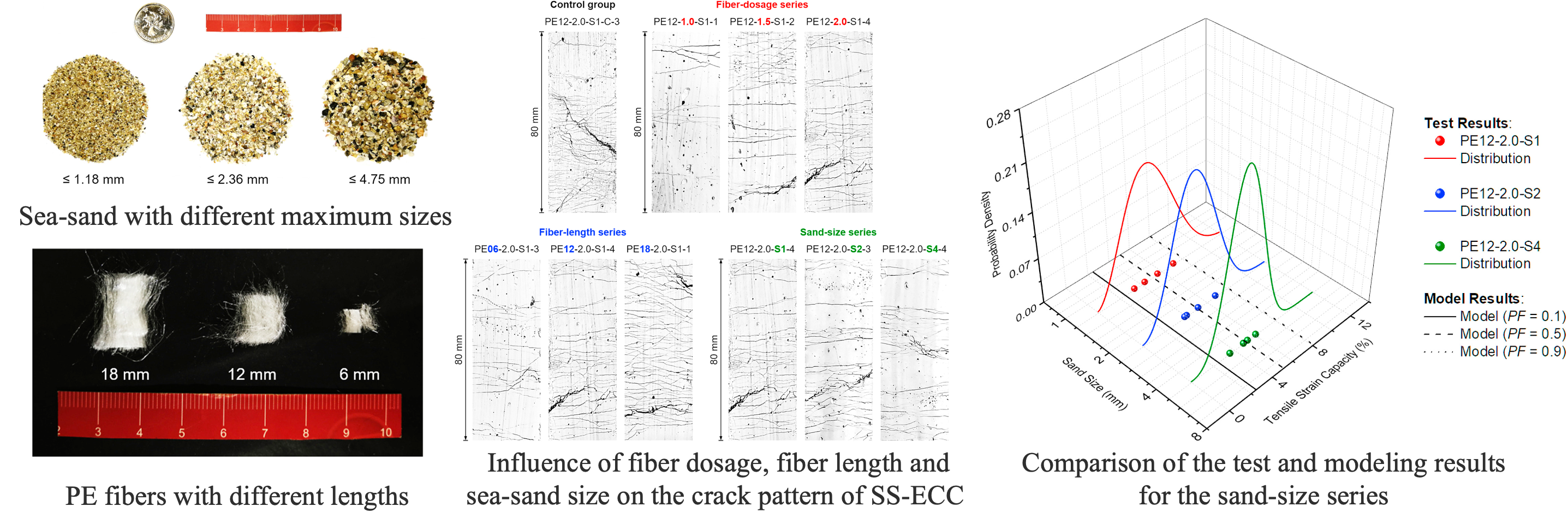High-strength seawater sea-sand Engineered Cementitious Composites (SS-ECC): Mechanical performance and probabilistic modeling
Highlight
• SS-ECC with compressive strength >130 MPa for marine and coastal applications was developed.
•High-strength SS-ECC achieved tensile strength >8 MPa and tensile strain capacity about 5% at 28 days.
•Using seawater had almost no negative effects on the 28-day mechanical properties of high-strength ECC.
•The effects of sea-sand size, fiber length and fiber dosage on mechanical properties were investigated.
•A probabilistic-based model was proposed to analyze the reliability of tensile strain capacity of ECC.
Engineered Cementitious Composite (ECC) is an advanced fiber-reinforced concrete exhibiting multiple-cracking and strain-hardening under tension. This study aims to explore the feasibility of producing high-strength seawater sea-sand Engineered Cementitious Composites (SSECC) for marine and coastal applications facing the shortage of freshwater and river/manufactured sand. The effects of key composition parameters including the sea-sand size (1.18/2.36/4.75 mm), the polyethylene fiber length (6/12/18 mm) and the fiber volume dosage (1.0/1.5/2.0%) on the mechanical performance of SS-ECC were comprehensively investigated. SS-ECC with tensile strength over 8 MPa, ultimate tensile strain about 5% and compressive strength over 130 MPa were achieved. Using seawater and sea-sand had almost no negative effects on the 28-day mechanical properties of high-strength ECC. For SS-ECC, increasing fiber length and dosage enhanced the tensile strain capacity, and sea-sand size had limited effects on the tensile performance; these phenomena were interpreted by the micromechanical analysis. A probabilistic-based method was proposed to analyze the reliability of the tensile strain capacity of SS-ECC, and it showed good agreement with the experimental results. The findings provide insights into the future design and applications of ECC in marine and coastal infrastructures for improving safety, durability, sustainability, and reliability.





